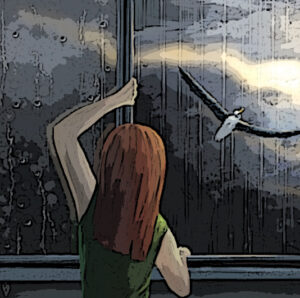The editors at Merriam-Webster have chosen SLOP as their 2025 Word of the Year.
The selection process for word of the year goes like this:
The editors review and analyze spikes and search data on top words as well as verbal usage. (DUH.)
But SLOP? What the ….?
My first thought was gooey, slimy, yucky, wet, brown stuff that nobody wants to touch, let alone eat. Blech.
But then I asked myself: why would a word from the 1700s/1800s make it to the top spot in 2025?
So of course, I googled the heck out of it.
Here are but a few of the new and improved definitions of SLOP:
Digital content of low quality. (I call this “news that stupid people use,” but okay.)
Propaganda and fake news that incite people to do irrational things. (I call this “news that stupid people use,” but okay.)
Talking cat and dog clips. (I’ll admit, I’ve enjoyed my fair share of talking animal banter.)
Artificial Intelligence that is chock full of misinformation, deepfakes, and copyright infringement. (I call this one downright dangerous, and it scares the bejesus out of me.)
And then there are the SLOP variations:
SLOPTIMIZED: Content or an algorithm that prioritizes the mass production of SLOP for maximum operating profit. (WAKE UP PEOPLE! It always comes down to the almighty dollar.)
WORKSLOP: Reports that waste coworkers’ time. (I TOTALLY agree with this one.)
SLIP-SLOP: Careless or hurried work. (YEP. I’ve been personally victimized by this one. Time and time again.)
SLOPAHOLIC: A sloppy drinker. (YEP. I’ve been personally victimized by this one. Time and time again.)
RETROSLOP: Failed attempts at loading retro-style content or games, leading to technical issues that prevent the game from running smoothly. (STUPID.)
FRIENDSLOP: Online game platforms played by someone with “friends” working toward a common virtual universe goal that often costs them (or their parents) thousands of dollars. (STUPID. And expensive.)
SLOP-ROT: A term for content perceived to cause a loss of intellectual or critical thinking skills due to its inane or moronic nature. (IGNORAMOUSLY STUPID.)
SLOPAGANDA: Propaganda disguised as entertainment. (Is anyone besides me seeing a frightening brain drain theme here?)
According to Merriam-Webster, the words below have defined the last 10 years:
2024: POLARIZATION
2023: AUTHENTIC
2022: GASLIGHTING
2021: VACCINE
2020: PANDEMIC
2019: THEY
2018: JUSTICE
2017: FEMINISM
2016: SURREAL
2015: ISM




